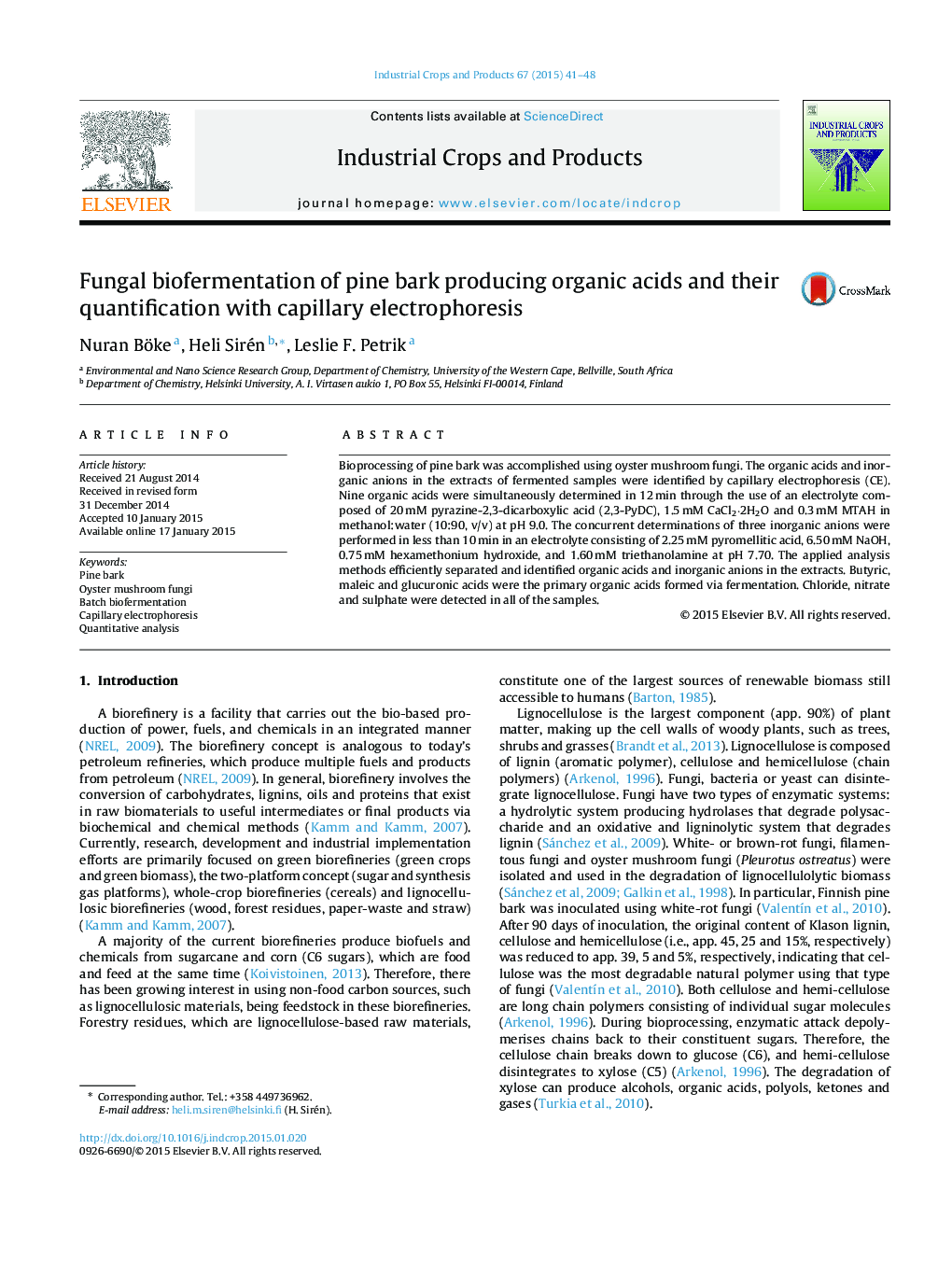| Article ID | Journal | Published Year | Pages | File Type |
|---|---|---|---|---|
| 4513091 | Industrial Crops and Products | 2015 | 8 Pages |
•Potential of pine bark as substrate for fungi was evaluated.•Batch biofermentation with mixing was an appropriate method for degrading of bark.•Oyster mushroom fungi was highly effective at producing a variety of organic acids.•Capillary electrophoresis with indirect UV detection is a suitable quantification technique.
Bioprocessing of pine bark was accomplished using oyster mushroom fungi. The organic acids and inorganic anions in the extracts of fermented samples were identified by capillary electrophoresis (CE). Nine organic acids were simultaneously determined in 12 min through the use of an electrolyte composed of 20 mM pyrazine-2,3-dicarboxylic acid (2,3-PyDC), 1.5 mM CaCl2·2H2O and 0.3 mM MTAH in methanol:water (10:90, v/v) at pH 9.0. The concurrent determinations of three inorganic anions were performed in less than 10 min in an electrolyte consisting of 2.25 mM pyromellitic acid, 6.50 mM NaOH, 0.75 mM hexamethonium hydroxide, and 1.60 mM triethanolamine at pH 7.70. The applied analysis methods efficiently separated and identified organic acids and inorganic anions in the extracts. Butyric, maleic and glucuronic acids were the primary organic acids formed via fermentation. Chloride, nitrate and sulphate were detected in all of the samples.
Graphical abstractFigure optionsDownload full-size imageDownload as PowerPoint slide
